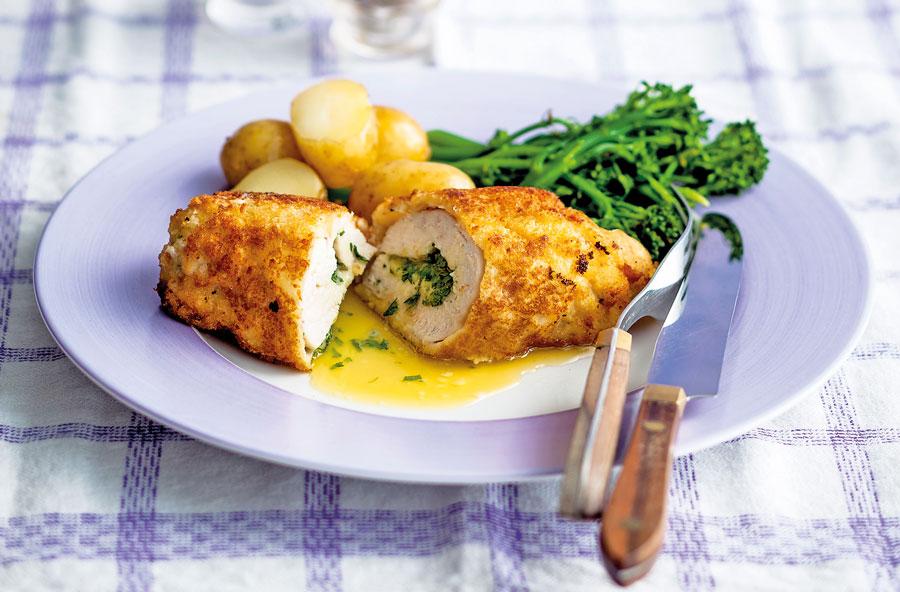This variation on the usual chicken Kiev has a delicious tomato filling. It is decadent but well worth trying. Serve with a green salad.
This makes the stuffing easier to use. Put the flour and blitzed breadcrumbs in separate bowls and beat the eggs in a third bowl.
Season the flour with salt and pepper. Take a chicken breast and make a small slit in one side.
Cut further into the breast to make a hole big enough to fill with a portion of stuffing, but be careful not to cut all the way through. Season the flesh inside, then push the stuffing right in.
Brush the rim with a little of the beaten egg, then seal. Prepare the other chicken breasts in the same way.
Dip each chicken breast into the flour, then dip it into the egg and then the breadcrumbs, then repeat the egg and breadcrumbs so each breast is double-coated. Half fill a deep-fat fryer or a large pan with oil.
Heat to 160°C (use a cooking thermometer if you’re frying in the pan), and cook the chicken Kievs, two at a time, for 10-12 minutes or until golden brown and cooked through. Or you can bake the chicken in a preheated oven at 200°C/fan 180°C/gas 6 for 40 minutes.
(Extracted from Rosemary Shrager’s Cookery Course by Rosemary Shrager, published by BBC Books).
A word on herbs
One way of building flavour in cooking is by the clever use of herbs. The following lists suggestions for which herbs work best with which foods. Remember that if you’re using dried herbs, you need only about a third of the amount of fresh as the flavour is more intense.
Basil: Tomatoes, vegetables, salad, pasta, chicken, lamb, pork.
Bay leaves: Soups, pasta sauces, fish, beef casseroles.
Chervil: Fish, chicken.
Chives: Eggs, sauces, salad, potatoes,
lentils, chicken.
Coriander: Tomatoes, vegetables,
beans, chicken
Dill: Eggs, vegetables, fish, shellfish,
chicken, pork.
Fenugreek leaves: Indian dishes, chicken, pork, vegetables, sausages.
Marjoram: Tomatoes, soups, beans, stuffings, chicken, lamb, beef.
Mint: Sauces, coulis, sweet dishes, beans, chicken, pork, lamb.
Oregano: Soups, tomatoes, beans, ham salad, pork, beef.
Parsley: Eggs, beans, potatoes, shellfish, fish, chicken, pork, lamb, beef.
Rosemary: Potatoes, squashes and other vegetables, stuffings, chicken, lamb, beef.
Sage: Veg, pasta, gnocchi, stuffings, pork sausages, beef.
Savoury: Squash, peas, salads, chicken,
turkey, lamb.
Tarragon: Eggs, veg, salads, beans, fish, chicken.
Thyme: Eggs, soups, potatoes, stuffings, casseroles, chicken, pork, sausages,
lamb, beef.
DAILY MAIL
